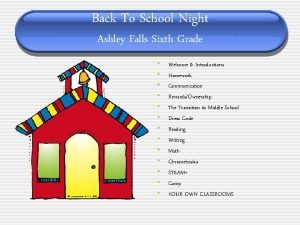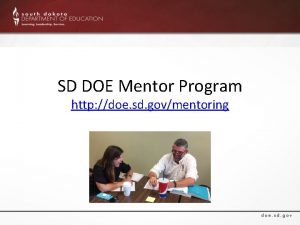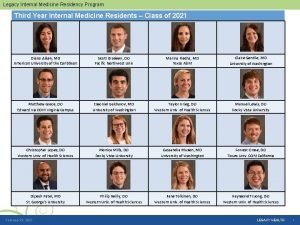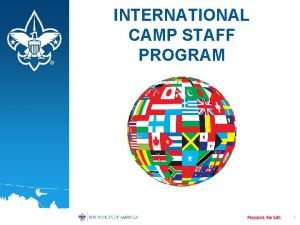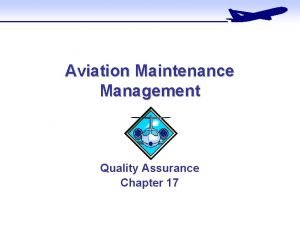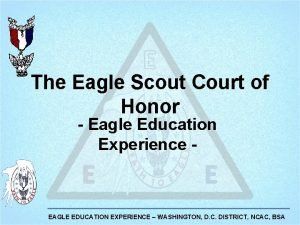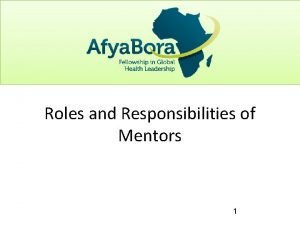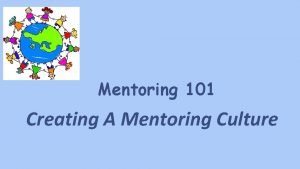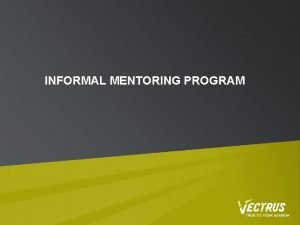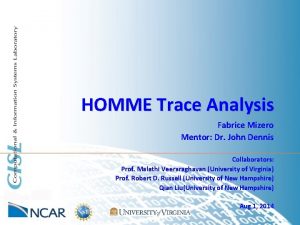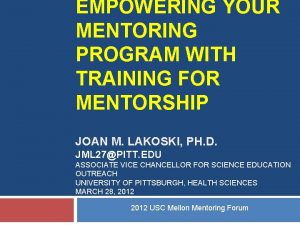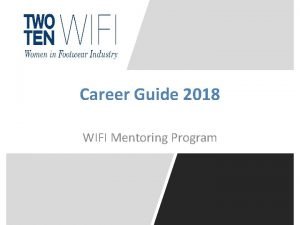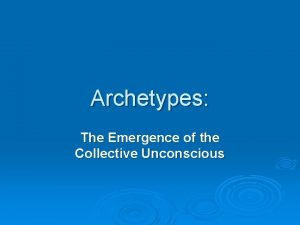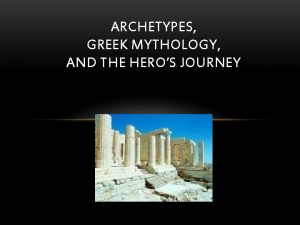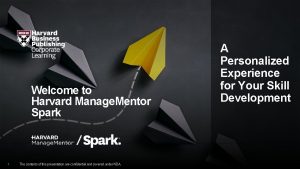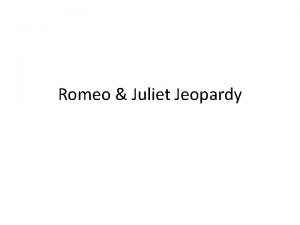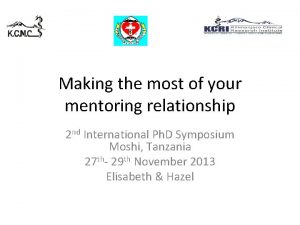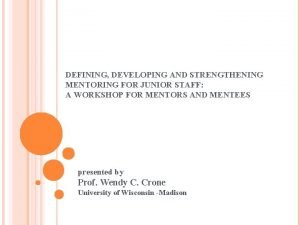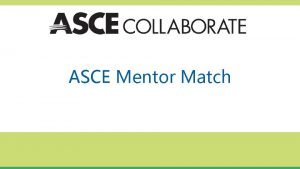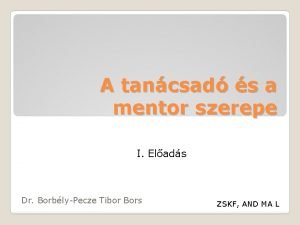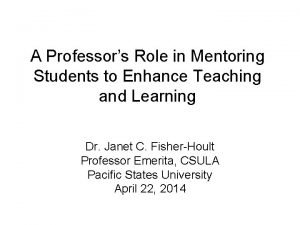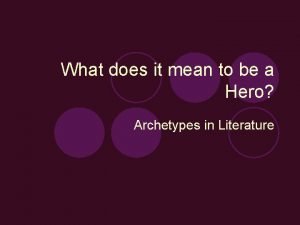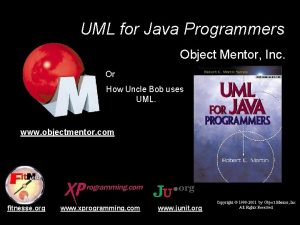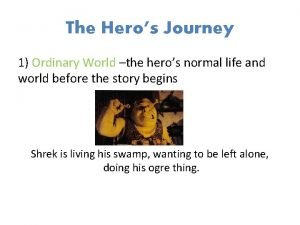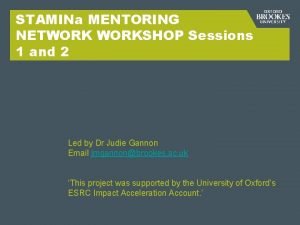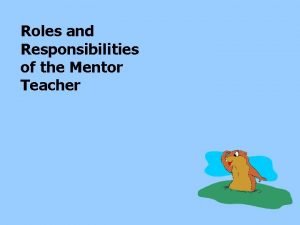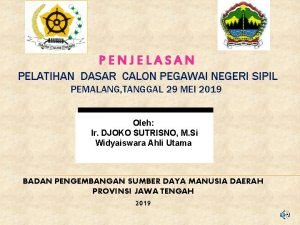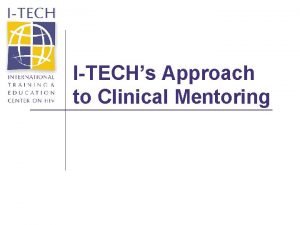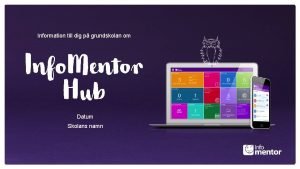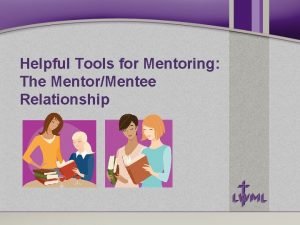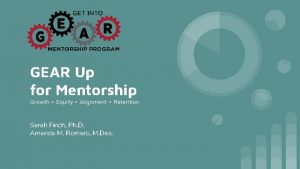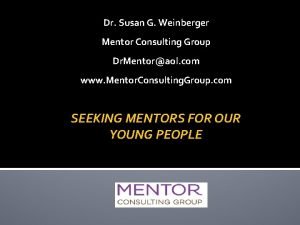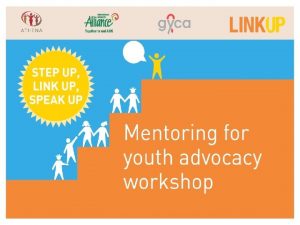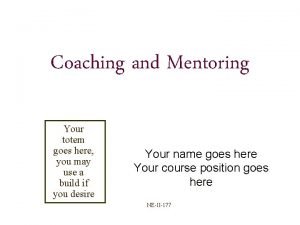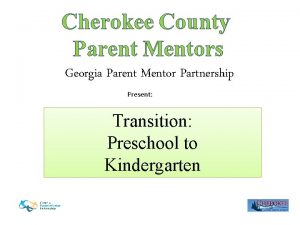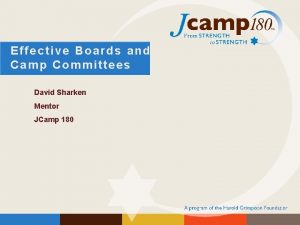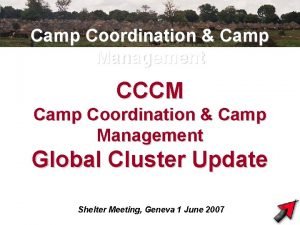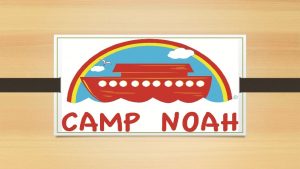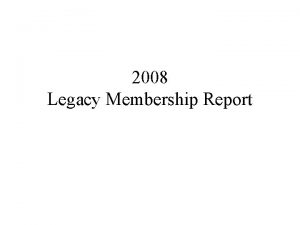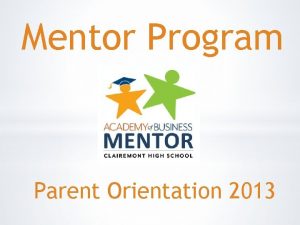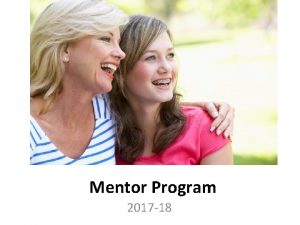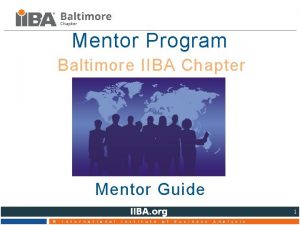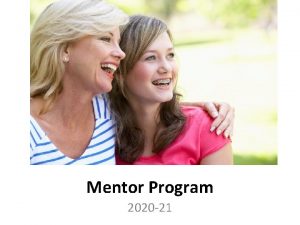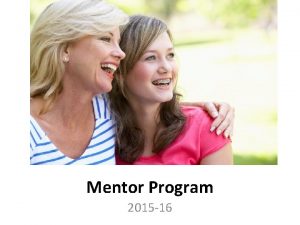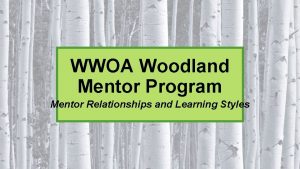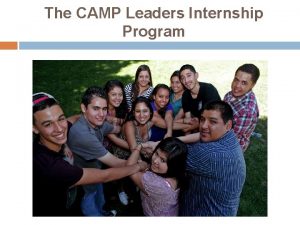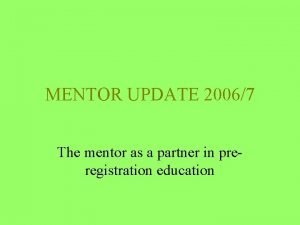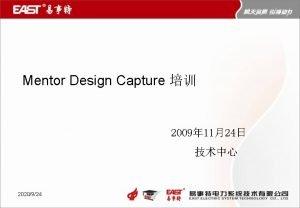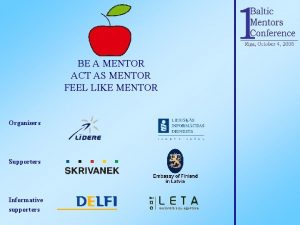Camp Legacy Program David Sharken Mentor Legacy Program










































- Slides: 42

Camp Legacy Program David Sharken Mentor & Legacy Program Director JCamp 180 david@hgf. org

Getting Involved A) Grab Tab – Click red arrow to A open/close Control Panel. Click square to toggle Viewer Window between full screen/window mode. Click mic icon to B mute/unmute your audio. B) Audio Pane – Select audio format. Click Audio Setup to verify Speakers & Microphone. C C) Questions Pane – Attendees can D submit questions and review answers. D) Type your question and click Send to submit it to the organizer.

Tonight’s Agenda • Overview of the Legacy Program • Key Steps in the Legacy Action Plan: o Case Statement o Identifying Prospects o In-reach/Marketing o Conversations o Management o Brief Overview of Financial Vehicles o Stewardship • Common Myths

Legacy Program Overview • High quality, results-oriented • Training, consulting, coaching • Simple legacy action plan Note: We will use the terms “Legacy” & “Planned Giving” interchangeably.

What is Legacy / Planned Giving? • Legacy giving is a deliberate, planned, formal action by a donor to share a portion of their assets with a charity. • Often, but not always, the gift is provided for after the donor’s lifetime.

Why Now? • • • Transfer of wealth is underway “If only asked” Thank donors while they are alive Increased annual giving Securing our future

JCamp 180 Camp Legacy Program Results Since January 2008 (As of February 2013) • 50 Participating camps: o Nearly 3, 100 Letters of Intent o Estimated Value of $78. 9 Million o $1, 652, 184 Realized

Lessons Learned from Camp Legacy • Culture of giving has changed • All ages & means are participating • Improved relationship-building skills • “Easy” way to solicit funds

Key Steps in the Legacy Action Plan • Case Statement • Identifying prospects • In-reach/marketing • Conversations • Management • Brief Overview of Financial Vehicles • Stewardship

Camp’s Legacy Plan • The Case Statement o Why should anyone want to leave a bequest or other planned gift? o What are the values your camp stands for? o What is the value of your camp to the community? o What is the impact of planned giving / endowment building on your camp? o What are the top 3 benefits of planned giving for camp?

Camp’s Legacy Plan (continued) • Identify Groups o o o o Closest & most loyal donors/families Consistent givers over ten or more years Past presidents & board members Staff Volunteers Seniors Alumni

Camp’s Legacy Plan (continued) • Marketing Plan o o “In-reach” not “out-reach” Identify target markets Identify best communications vehicles Communicate through multiple channels (online, print, at camp)

Camp’s Legacy Plan (continued) • Implementing the Plan with Personal Contacts & Conversations o o Family histories & values Preparing for personal meetings Personalized mailings The Jewish conversation

Camp’s Legacy Plan (continued) • Management Plan o Who is responsible for the plan? o To whom do they report? o How are you going to measure success? o Who will track gifts, document, & record?

Camp’s Legacy Plan (continued) • Setting Goals o Years 1 & 2 – Number of individual conversations, small, & large group presentations o Year 3 – Stewardship activities o Beyond – Sustaining the effort

How People Give • Provisions in wills (bequests) • IRA & other retirement beneficiaries • Charitable Gift Annuities • Charitable Remainder Trusts • Charitable Lead Trusts • Appreciated Asset Gifts • Life Insurance

Camp’s Legacy Plan (continued) • Recognition & Stewardship o How are you going to publicly recognize? o How will you communicate regularly?

Responsibilities of Board/Camp Committee • Prospecting • Education & cultivation • Personal participation • Asking • Thanking

Debunking Myths • Myths About… o o what planned giving really is organizational barriers who makes a good legacy prospect personal / emotional barriers to asking • Note: We will first present the “myths” in black followed by the “truths” in blue

Myth: Having legacy conversations means I have to talk about death (I cannot emotionally handle that). Legacy conversations are about mission & future vision.

Myth: Soliciting legacy gifts is the same as raising money for an endowment. Endowment campaigns have the goal of raising money NOW – Legacy gifts are NOW or LATER.

Myth: We need money now & cannot possibly think about legacy giving. You can’t afford NOT to think about legacy activities.

Myth: All planned gifts are deferred gifts.

Myth: All planned gifts are deferred gifts. Planned gifts could be given today, through vehicles such as gift annuities.

Myth: We just don’t have the time to do planned giving. You’re already spending time on donor relations – Don’t miss the opportunity…

X Myth: Planned giving hurts annual giving – If people make a legacy commitment, they’ll stop giving annually because they think they are “off the hook. ” Legacy donors increase their annual giving.

Myth: We can’t ask someone to join the legacy society AND ask for a capital gift in the same year. Every donor is different.

Myth: If there is no will, there is no planned gift. There are other planned giving vehicles, such as retirement funds, life insurance beneficiaries, etc.

Myth: If a donor doesn’t have an “estate” they cannot or will not make a legacy gift. Everyone you’re approaching has assets.

Myth: Single people or people without heirs have no need for a will, so they’re not going to want to talk about legacy. Donors without heirs are often MORE willing to provide for their favorite charity.

Myth: Only seniors over 65 years old are planned giving prospects. Young professionals have 401(k)s and 403(b)s, too.

Myth: Asking for a legacy gift is like stealing someone’s inheritance. There are usually plenty of funds or other assets given to the heirs.

Myth: The donor is just going to leave everything to their kids, so there is no point in asking. The children of the donor will object if the donor bequests something to an organization. The donor wants to leave their estate to his/her kids to decide if they want to support camp after s/he dies. Heirs are usually still well taken care of.

Myth: Planned giving is not appropriate for a young organization. Even young organizations have a base of loyal donors.

Myth: The donor who only gives $50 a year ! t s e and has never raised her gift in all thequyears e B she’s been giving obviously doesn’t have n o i l l i anything to give us 1 in. Mher will. $ s e v a e L r o Only wealthy n people are planned giving o D 0 prospects. 5 $ l a u n n A Planned giving is egalitarian.

Myth: Just signing a letter of intent will not lead someone to include us in their will.

Myth: Just signing a letter of intent will not lead someone to include us in their will. Donor stewardship is the key – for the rest of their natural life!

Myth: A legacy letter of intent should be required of every board member. Planned giving is a very personal decision.

Myth: I don’t have to make my own legacy gift because I am on staff. Only ask of others what you’ve already done yourself.

Myth: I need more technical training before I can even begin to raise the topic of a major planned gift. I need to be a planned giving expert to be involved in gift planning. I will suffer eternal mortification if a prospect or donor asks me a tax or financial planning question that I can’t answer. I shouldn’t start a legacy program at my camp unless I know all of the legal nuances about giving vehicles – otherwise I could get our agency sued. Your job is NOT to be an expert

Myth: We can’t launch a successful legacy program without an experienced planned giving officer on our staff. Legacy lay leaders need to be tax attorneys or financial advisors. We need to be planned giving experts. Your job is passion.

Camp Legacy Program David Sharken Mentor & Legacy Program Director JCamp 180 david@hgf. org
 Camp marston 6th grade camp
Camp marston 6th grade camp Sd doe
Sd doe Legacy health internal medicine residency
Legacy health internal medicine residency International camp staff
International camp staff Aviation maintenance quality management
Aviation maintenance quality management Eagle court of honor scripts
Eagle court of honor scripts Mentor responsibilities
Mentor responsibilities Mentor responsibilities
Mentor responsibilities Mentorship meeting agenda
Mentorship meeting agenda Mentor versus sponsor
Mentor versus sponsor Thank you letter mentor
Thank you letter mentor Mentor homme
Mentor homme Mulan hero's journey 12 steps
Mulan hero's journey 12 steps Rollercoaster
Rollercoaster Shadow archetypes
Shadow archetypes Mentor and mentee roles and responsibilities
Mentor and mentee roles and responsibilities Nature vs mechanistic world archetype
Nature vs mechanistic world archetype What is an archetype in mythology
What is an archetype in mythology Harvard mentor manage
Harvard mentor manage Who wants the prince to execute romeo
Who wants the prince to execute romeo What is a mentor sentence
What is a mentor sentence What does a mentor do
What does a mentor do Mentoring junior staff
Mentoring junior staff Asce mentor match
Asce mentor match Sa mentor
Sa mentor What does a mentor do
What does a mentor do Mentor pupil relationship archetype examples
Mentor pupil relationship archetype examples Reading and vocabulary mentor
Reading and vocabulary mentor Uml for java programmers
Uml for java programmers Shrek ordinary world
Shrek ordinary world Stamina mentor
Stamina mentor Responsibilities of a mentor teacher
Responsibilities of a mentor teacher Kartu bimbingan aktualisasi mentor
Kartu bimbingan aktualisasi mentor Wiesel mentor
Wiesel mentor How to become an nrp instructor mentor
How to become an nrp instructor mentor Qualities of a good mentor
Qualities of a good mentor Infomentorhub
Infomentorhub Mentor and mentee prayer
Mentor and mentee prayer Qualities of a good mentor
Qualities of a good mentor Mentor consulting
Mentor consulting Mentor/mentee icebreakers
Mentor/mentee icebreakers Totem mentor
Totem mentor Georgia parent mentor partnership
Georgia parent mentor partnership
